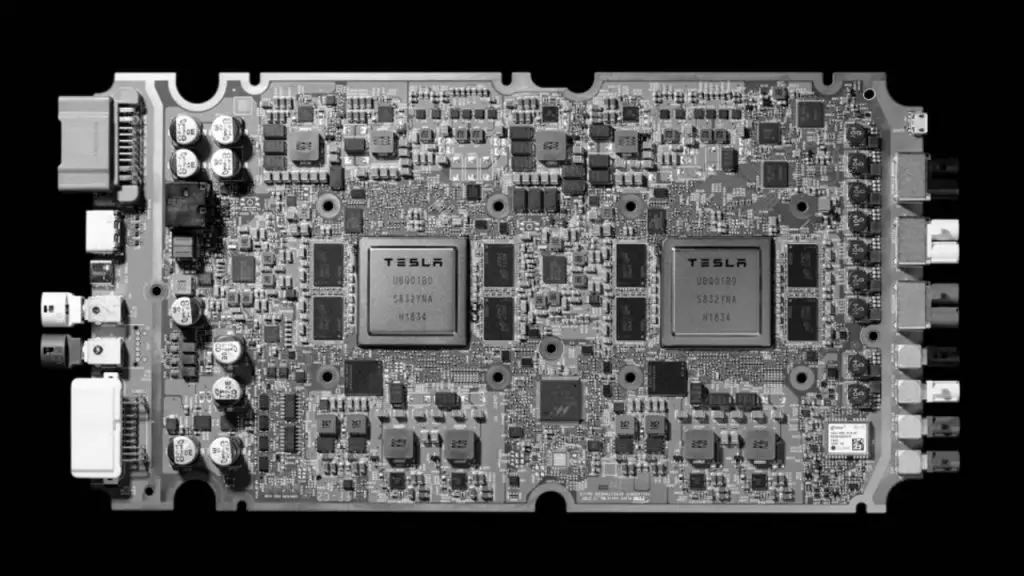Tesla cars are different from every other car on the market. It’s electric and allows its drivers to activate the software feature “FSD Beta” that enables a Tesla to drive partially autonomously on highway and city streets. But this FSD is expensive.
A Tesla buyer can access this FSD software in two ways.
- Pay a total of $10,000 in advance or,
- Pay a monthly $199 subscription fee.
In either way, the FSD is expensive.
Our analysis found that Tesla FSD is expensive because of the cost associated with the research and development of the FSD hardware, software, and related infrastructure. Moreover, Tesla can charge more for FSD features because no other car manufacturer provides these advanced driver assistance functionality.
Let’s explain further.
Every Tesla comes with an FSD computer. Tesla designed their chips from the ground up for this computer. They did not buy any off-the-shelf chips from Nvidia or Intel. Their Neural-Net-based FSD chips are now in the third generation. No other car company in history has done it.
Tesla is also building a supercomputer named DOJO to train their FSD software. For this supercomputer, Tesla also designed all the necessary chips and hardware by themselves. When complete, it would be the world’s most advanced supercomputer.
All these hardware designs and fabrication cost a lot of capital. Therefore, each FSD package Tesla sells is priced to recoup these investments with a profit.
Furthermore, Tesla is also actively developing the FSD software. Thousands of high-paying engineers are working on this project. No other car company is doing it at the scale of Tesla.
For example, it does not matter which car or truck we choose. All the in-car infotainment systems and software are terrible except for Tesla; Even though some modern cars provide a big touch screen, their software is buggy and not intuitive. Tesla knows how its software is far superior to its competitor. Thus they can charge a premium for their FSD software.
Tesla is actively developing their FSD software, and they are also collecting data from their vehicle regularly. When necessary, they update their vehicle through OTA updates. It’s revolutionary for a car company. All these processes require a lot of investment to build the infrastructure.
Let’s compare the FSD feature with the competition — Ford’s BlueCruise, Intel’s MobilEye, and Waymo.
Ford’s BlueCruise is available only on select pre-mapped highways. It does not work on city streets. No Ford vehicle is capable of over-the-air (OTA) software update. Therefore, it’s doubtful that Ford will push software updates regularly unless you take your Ford vehicle to a Ford dealership.
Ford is also not collecting any data from their car. In the artificial intelligence industry, data is everything. Those who have more data wins. It’s why Google is the king of the search engine because it has user behavior data that other search engines don’t have.
Intel’s MobilEye does not make vehicles. They work with the vehicle manufacturer. For example, BMW Driving Assistant Professional on the X5 (2019 – 2020) uses MobilEye technology. But these features are not as advanced as Tesla FSD Beta.
Waymo does not sell its hardware or software. They are trying to build a Taxi service similar to Uber but with their vehicle. It is rumored that a single waymo vehicle hardware costs more than $150,000. So, it’s not for day-to-day consumers.
Therefore, except for Tesla, no other company has a clear vision or business model for complete self-driving solutions. Tesla knows that they are way ahead of its competition and can charge extra for their FSD software.
It’s similar to Apple’s products. Apple can charge a premium for its products because of design, software, long-term support, and brand loyalty. The same goes for Tesla.
Tesla has created an ecosystem surrounding their vehicle. Dealer-less vehicle sales, seamless supercharger network, advanced in-car technology, brand loyalty are all present for Tesla. Thus they can get away with premium pricing for their FSD software.
